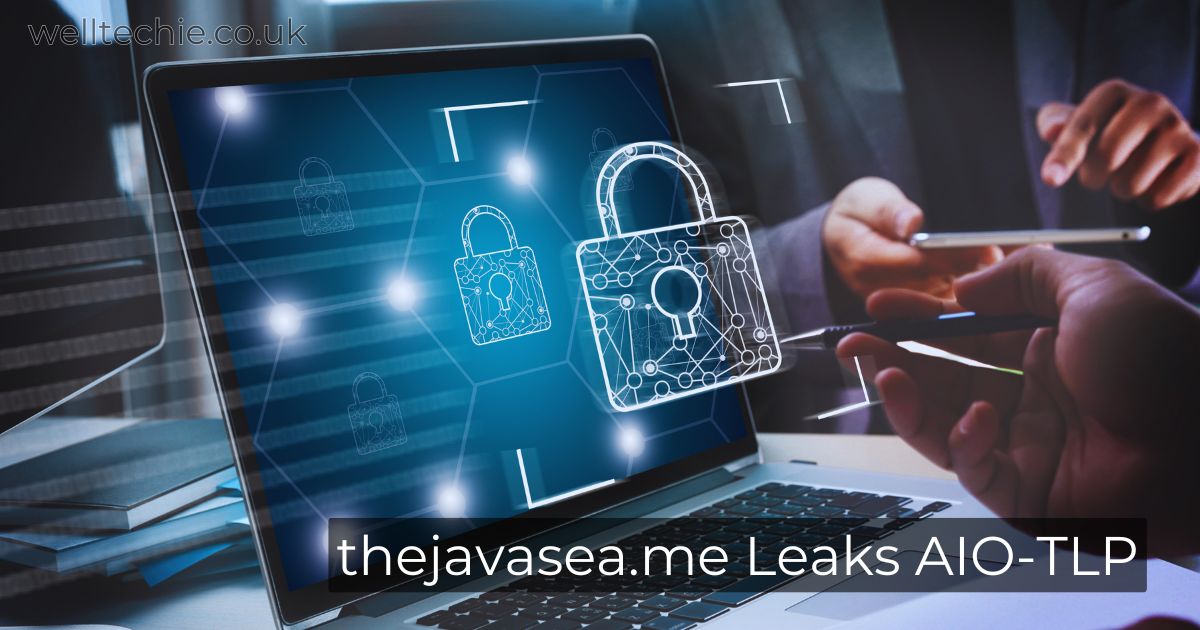Data leaks are a serious concern in today’s digital world. The recent leaks from thejavasea.me have highlighted significant threats to user security. This incident has raised alarms for cybersecurity experts and everyday users. Understanding these implications is crucial for both individuals and organizations. This article explores the impact of thejavasea.me leaks AIO-TLP on user security. We will look at vulnerabilities, risks, and steps users can take to protect themselves.
Understanding AIO-TLP
AIO-TLP stands for All-In-One Tool for Leak Protection. It integrates various protective measures to safeguard sensitive data. Features include encryption, access control, and monitoring. AIO-TLP aims to keep sensitive information secure from unauthorized access.
Data breaches are becoming more common. As organizations rely on digital platforms, robust security measures are essential. AIO-TLP offers a proactive approach to data security. It helps users identify vulnerabilities before they can be exploited. Understanding AIO-TLP’s role is vital when discussing thejavasea.me leaks.
What Are Data Leaks?
Data leaks happen when sensitive information is exposed to unauthorized parties. This can occur through hacking, poor security practices, or accidental disclosures. Common types of leaked data include personal identifiable information (PII), financial details, and login credentials. The consequences can be severe, leading to identity theft and financial loss.
As more data is shared online, the potential for leaks grows. Organizations must take steps to protect this data. By understanding what data leaks are, users can appreciate the significance of incidents like thejavasea.me leaks AIO-TLP.
Thejavasea.me: Background Information
Thejavasea.me is an online platform that has faced scrutiny for data leaks. Originally a resource for digital tools, it has had multiple incidents where user data was compromised. The platform’s security shortcomings have raised concerns among users and experts. Past incidents have highlighted vulnerabilities in its systems.
Understanding the platform’s history helps contextualize the leaks. It shows the risks users face when using such services. Thejavasea.me’s background is crucial to understanding the current situation.
Overview of the Recent Leaks
Thejavasea.me leaks revealed a vast amount of sensitive data. Reports indicate millions of records, including PII, usernames, and passwords, were exposed. This breach alarmed users, as cybercriminals can exploit this data.
The timeline of events shows how the situation unfolded. Initial reports of unusual activity led to investigations. As the extent of the leak became clear, users were advised to secure their accounts. Understanding these events is essential for grasping the leaks’ impact.
Scope of the Data Leaks
The scope of thejavasea.me leaks is alarming. Millions of records were compromised, including personal details, email addresses, and financial data. This exposes users to serious threats, such as identity theft and fraud.
The volume of leaked data underscores the need for strong security measures. The more information leaked, the greater the risk to users. Organizations must prioritize data protection to prevent breaches. Understanding the scope helps users appreciate their risks.
Impact on User Security
Thejavasea.me leaks AIO-TLP have a profound impact on user security. Exposed sensitive data compromises individual accounts and undermines trust in digital platforms. Affected users face immediate threats, including identity theft and financial loss. The psychological effects can lead to anxiety and a sense of violation.
Long-term security implications are significant. Users may become more cautious about sharing personal information. This shift can hinder the digital economy. Organizations must recognize the need to rebuild trust with users through robust security measures.
User Vulnerabilities Exposed
The leaks exposed various user vulnerabilities. One major issue is the reliance on weak or reused passwords. This practice makes accounts easy targets for cybercriminals. Reusing passwords across platforms increases the risk of compromise. The leaks also highlight the dangers of inadequate security measures, like lacking two-factor authentication (2FA).
Understanding these vulnerabilities is crucial for users. Recognizing the factors that led to the leaks can help individuals take proactive steps. Stronger password practices and enabling 2FA are essential for securing accounts.
Cybercriminal Activity Post-Leak
Following thejavasea.me leaks, cybercriminal activity has surged. Criminals exploit data breaches to launch phishing attacks. They impersonate legitimate entities to deceive users into providing more personal information. This can lead to financial loss and further security breaches.
Scams linked to the leaks include phishing emails that mimic official communications. These emails often request users to verify account details or reset passwords. Users must remain vigilant and skeptical of unsolicited communications. By understanding these tactics, individuals can better protect themselves.
Importance of Cyber Hygiene
The need for good cyber hygiene is evident after thejavasea.me leaks. Cyber hygiene includes practices that maintain the security of online accounts. Regularly updating passwords and using unique passwords for different accounts are essential. Enabling two-factor authentication adds an extra layer of security.
Users should educate themselves about potential threats, such as phishing scams. Recognizing suspicious emails or messages can empower individuals to safeguard their information. Organizations also play a role in promoting cyber hygiene. Providing training and resources helps create a culture of cybersecurity awareness.
Legal and Regulatory Implications
Thejavasea.me leaks raise important legal implications. Various data protection laws, such as the General Data Protection Regulation (GDPR), impose strict obligations on organizations. Failure to comply can result in fines and legal consequences.
For affected users, understanding their rights is crucial. Many laws give individuals the right to access their data and request corrections. Users should know their rights under these laws. This knowledge can empower them to take action if affected by a data leak.
Response from Security Experts
Cybersecurity experts emphasize the need for immediate action post-leak. They recommend organizations adopt comprehensive security measures. Regular audits and vulnerability assessments can help identify and address weaknesses.
Experts also advise users to secure their accounts. Changing passwords, enabling two-factor authentication, and monitoring accounts for unusual activity are vital steps. Following expert advice can enhance defenses against threats stemming from the leaks.
Tools and Resources for Users
Users can use various tools to navigate risks from thejavasea.me leaks. Password managers help generate and store strong, unique passwords. Monitoring services can alert users to data breaches involving their information.
Resources for reporting identity theft and fraud are crucial. Many organizations offer support for individuals suspecting their information has been compromised. Using these tools and resources can help users protect themselves effectively.
Mitigating Risks Post-Leak
Users must take proactive steps to mitigate risks after thejavasea.me leaks. Changing passwords for affected accounts is essential. New passwords should be strong and unique. Enabling two-factor authentication adds another layer of security.
Monitoring accounts for unusual activity is vital. Users should regularly check bank statements and online accounts for unauthorized access. Quick action is crucial if suspicious activity is detected. By adopting these measures, individuals can reduce their vulnerability.
The Role of Organizations in User Security
Organizations are critical in safeguarding user data. After incidents like thejavasea.me leaks, companies must enhance their data protection practices. This includes implementing robust security measures and conducting regular audits.
Transparency is key to rebuilding trust. Organizations should communicate openly about their data protection efforts. Informing users about security measures can help restore confidence in their platforms.
Future Trends in Data Security
Several emerging trends are shaping data security. The complexity of cyber threats requires advanced security measures. Technologies like artificial intelligence and machine learning can help detect potential threats.
User awareness and education will also play a vital role. As data breaches increase, organizations and individuals must prioritize training and resources. A proactive cybersecurity culture can enhance defenses against data leaks.
User Awareness and Education
Improving user education about data security is essential. After thejavasea.me leaks, understanding the risks of sharing personal information is crucial. Educational programs can empower users to make informed decisions.
Organizations have a responsibility to provide training and resources. Equipping users with knowledge helps mitigate risks from data breaches. Fostering a culture of cybersecurity awareness contributes to a safer digital environment.
Case Studies of Similar Incidents
Examining past data leaks offers valuable insights. For example, the Equifax breach in 2017 exposed millions of individuals’ personal information. This incident led to widespread identity theft and financial fraud.
Another example is the Yahoo data breaches, which compromised billions of accounts. The fallout from these incidents highlighted long-term consequences, including legal repercussions. Analyzing these case studies informs strategies to prevent future data breaches.
Conclusion
The impact of thejavasea.me leaks AIO-TLP on user security is a stark reminder of vulnerabilities in our digital world. As sensitive information continues to be exposed, individuals must remain vigilant. Understanding risks and adopting best practices for cybersecurity are essential.
Organizations must recognize their responsibility in safeguarding data. By prioritizing robust security measures, they can help rebuild trust. In a world where data breaches are common, proactive steps are vital for a safer digital environment.









